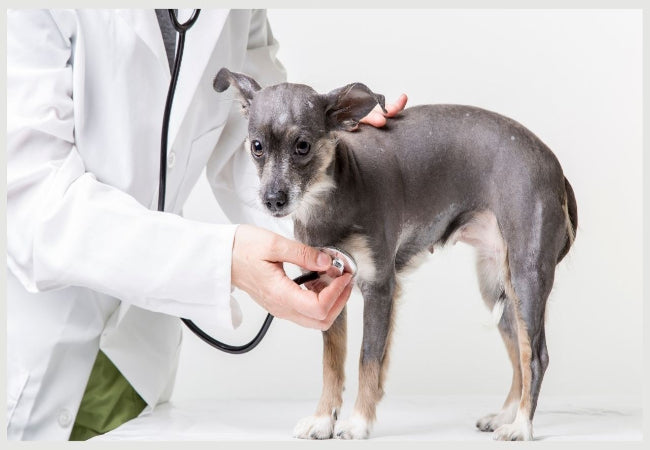Helping a Fearful Dog: Vet Strategies to Build Confidence 🐶✨

In this article
Helping a Fearful Dog: Vet Strategies to Build Confidence 🐶✨
By Dr. Duncan Houston BVSc
Does your dog cower around strangers, avoid new places, or seem overly sensitive to sounds or change? You’re not alone—and neither is your dog. Fearfulness is common, especially in rescues or undersocialized dogs, but with the right support, they can thrive.
I’m Dr. Duncan Houston. In this article, I’ll share vet-approved techniques for supporting fearful dogs and building their confidence step by step.
🧠 Why Some Dogs Are Fearful
- 🐶 Genetics – Some breeds and individuals are naturally more cautious
- 🚫 Lack of early socialization – Missed exposure during the puppy social window (3–16 weeks)
- 💥 Past trauma – Negative experiences, punishment-based training, or abandonment
- 🧠 Sensory sensitivity – Noise sensitivity or cognitive issues (especially in older dogs)
Important: Fear is not “bad behavior.” It’s a survival response—and it deserves patience, not punishment.
📋 Signs of a Fearful Dog
- 😓 Panting, drooling, or pacing in new environments
- 📉 Avoiding eye contact or turning away from people
- 🚪 Trying to escape or hide (under tables, behind doors)
- 🐾 Trembling, tucked tail, or sudden stillness (“freeze” response)
- 🗯️ Growling or barking out of fear—not aggression
✅ VetBacked ConfidenceBuilding Plan
1. Build Trust Through Predictability
- 🕐 Feed, walk, and rest on a regular schedule
- 🎯 Avoid surprises like loud guests or chaotic environments
2. Control the Environment
- 📦 Use safe spaces: crate, quiet room, or calming mat
- 🎧 Use white noise during storms or city sounds
- 💡 Dim lighting and gentle handling always
3. Use Distance + Treat Pairing (Desensitization)
- 🐕 Let your dog observe scary things from a safe distance
- 🎁 Pair scary stimuli with high-value rewards (e.g., cheese, chicken)
- 📈 Decrease distance only when they are calm and curious
4. Reinforce Bravery, Not Barking
- 👏 Praise and reward any curiosity, sniffing, or brief engagement
- 🚫 Don’t force them to interact with people, dogs, or objects
5. Teach ConfidenceBoosting Cues
- 🪑 Teach “go to your bed” or “place” to give your dog a job during scary moments
- 🔁 Use repetition with short, achievable tasks
🚫 What to Avoid
- ❌ Don’t force physical contact or drag your dog toward fear triggers
- ❌ Don’t use punishment or corrections—it reinforces fear
- ❌ Don’t overwhelm your dog with too many new experiences too quickly
🧪 When to Speak to Your Vet
If fear is:
- 📆 Chronic and worsening over time
- 🛌 Interfering with daily life (eating, walking, toileting)
- 🧠 Accompanied by sudden aggression, pacing, or zoning out
Your vet may recommend behavior therapy, supplements, or mild antianxiety medications for severe cases.
🎁 Gear That Helps Fearful Dogs Thrive
- Explorer Harness – Designed for secure, pressure-free control without choking or tugging
- Bungee Lead – Smooths tension and absorbs sudden pulls during stress events
- Dual Pocket Treat Dispenser – Always have rewards ready to build positive associations
💬 What Dog Parents Say
“We thought she was just ‘difficult’—but once we treated her like a fearful dog, she bloomed.” – Tanya & Sadie
“Daily routines and slow socialization made a huge difference. Thank you for the nopressure approach.” – Daniel & Rex
👩⚕️ Need a Custom Confidence Plan for Your Dog?
Send your dog’s triggers, home setup, and daily schedule to Ask A Vet and we’ll send a personalized, vetdesigned confidencebuilding protocol.
Final Thoughts
A fearful dog isn’t broken—they just need a safer world to bloom in. Through patience, structure, and gentle exposure, you can show your dog they’re safe, supported, and stronger than they think.






